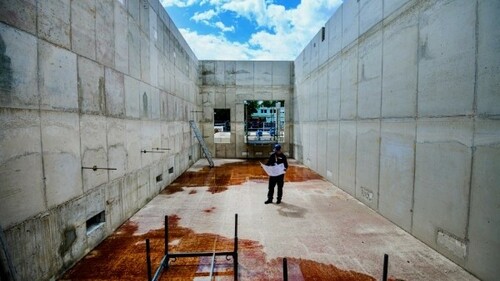Shell to build 100-megawatt renewable hydrogen electrolyser in Wesseling, Germany
COLOGNE/WESSELING, GERMANY – Shell Deutschland GmbH (“Shell”) has taken a Final Investment Decision (FID) to progress REFHYNE II, a 100-megawatt renewable proton-exchange membrane (PEM) hydrogen electrolyser at the Shell Energy and Chemicals Park Rheinland in Germany. Using renewable electricity, REFHYNE II is expected to produce up to 44,000 kilograms per day of renewable hydrogen to partially decarbonise site operations. The electrolyser is scheduled to begin operating in 2027.
The REFHYNE II project has been enabled by supportive policies, including the European Union’s (EU) binding targets for the use of renewable hydrogen, and the German Federal Government’s regulatory framework. The project has also received funding from the EU’s Horizon 2020 research and innovation programme.
“Today's announcement marks an important milestone in delivering our strategy of more value with less emissions. Investing in REFHYNE II is a visible demonstration of our commitment to the hydrogen economy, which will play an important role in helping to decarbonise Shell’s operations and customer products," said Shell’s Downstream, Renewables and Energy Solutions Director Huibert Vigeveno. “Our decision to invest illustrates what can be achieved with the right enabling conditions to deliver competitive projects.”
Renewable hydrogen from REFHYNE II will be used at the Shell Energy and Chemicals Park to produce energy products such as transport fuels with a lower carbon intensity. Using renewable hydrogen at Shell Rheinland will help to further reduce Scope 1 and 2 emissions at the facility. In the longer term, renewable hydrogen from REFHYNE II could be directly supplied to help lower industrial emissions in the region as customer demand evolves.
The project will benefit from the experience Shell and its project partners, ITM and Linde, have in developing, constructing and operating other renewable hydrogen projects in Europe. REFHYNE II follows the success of the 10-megawatt PEM electrolyser REFHYNE I, which started up in 2021 and uses the same technology. Since 2021, preparations have been under way to deliver the detailed engineering plans for REFHYNE II, complete on-site groundworks, and connect to existing infrastructure.
Latest news
UPM receives triple sustainability certification for the Leuna biorefinery
Leuna Chemical Complex →The Leuna biorefinery is the world’s first industrial-scale facility of its kind, converting wood into advanced biochemicals at scale. This milestone reinforces UPM’s role as a frontrunner in susta...
On stream: BASF starts up new world-scale plant for hexamethylenediamine in Chalampé, France
Increase of BASF’s HMD production capacity to 260,000 metric tons Expansion of polyamide business together with polyamide 6.6 production in Freiburg
Biogas and e-SAF Business Joint Venture Established with Denmark's Skovgaard Energy
A new company engaged in the development of renewable energy to produce biogas and Power to X (*1) business such as e-SAF (*2). The new company aims to produce around 40 million Nm³ (*3) of biogas ...
BASF starts commercial operation of Black Mass plant for Battery Recycling in Schwarzheide, Germany
It is one of the biggest commercial Black Mass plants in Europe, with an annual processing capacity of up to 15,000 tons of end-of-life lithium-ion batteries and production scrap. This equals rough...

